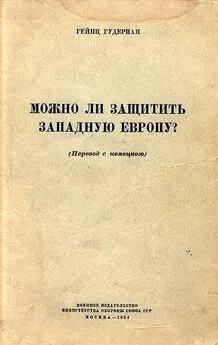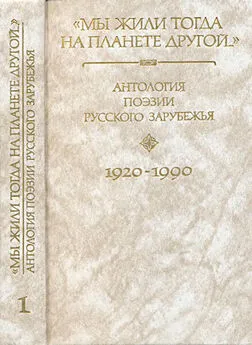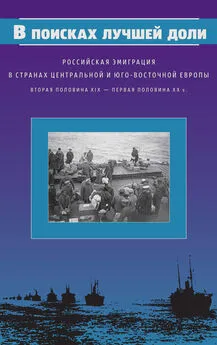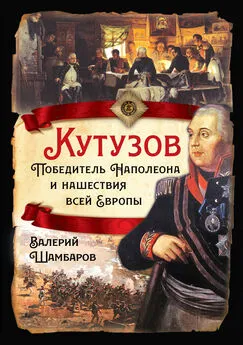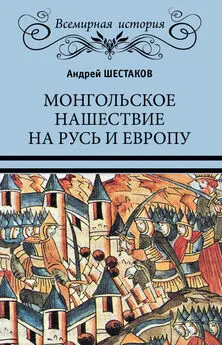Люсьен Мюссе - Варварские нашествия на Западную Европу. Вторая волна
- Название:Варварские нашествия на Западную Европу. Вторая волна
- Автор:
- Жанр:
- Издательство:Евразия
- Год:2001
- Город:Санкт-Петербург
- ISBN:5-8071-0087-5
- Рейтинг:
- Избранное:Добавить в избранное
-
Отзывы:
-
Ваша оценка:
Люсьен Мюссе - Варварские нашествия на Западную Европу. Вторая волна краткое содержание
В VIII–X вв. Европу захлестнула волна насилия. Мусульмане нападали с запада, викинги — с севера, венгры и славяне — с востока. В бешеном водовороте набегов государствам Западной Европы, уже свыше столетия не подвергавшимся подобному натиску извне, пришлось приспосабливаться к новым условиям, сражаясь на одном фронте, договариваясь, платя выкуп на другом, ассимилируя пришлые народы и впитывая их опыт. Феодальная анархия довершила разрушение древних устоев общества. Но Европа пережила это тяжкое испытание и вышла из него обновленной.
Что потеряли западноевропейские государства в этой долгой и пагубной для них войне, что приобрели? Что представляли собой народы, лавиной ринувшиеся на Германию, Францию, англосаксонское королевство и почему им сопутствовала удача? Именно этим вопросам известный французский историк Л. Мюссе и посвящает свою книгу.
Варварские нашествия на Западную Европу. Вторая волна - читать онлайн бесплатно полную версию (весь текст целиком)
Интервал:
Закладка:
La Laxdoela Saga, legende historique islandaise, перевод F. Mosse, Paris, 1914.
La saga de Grettir, перевод F. Mosse, Paris, 1933.
В случае неудачи можно также обратиться к следующим переводам:
La saga de Nial, перевод R. Dareste, Paris, 1896 (важна, главным образом, в плане правовой атмосферы).
La saga du scalde Egil Skailagrimsson, histoire poetique d'un Viking scandinave de Xe siecle, перевод F. Wagner, Bruxelles, 1925 (лучшая сага о великих экспедициях).
Кроме того, можно соприкоснуться с оригинальными текстами благодаря прекрасному двуязычному изданию:
La saga d'Eric le Rouge, le Reck de Groenlanais, ред. и перев. M. Gravier, Paris, 1955. Лучшее собрание переводов, представляющих собой подлинные литературные удачи:
Thule. Altnordische Dichtung und Prosa, lena, 1914–1930, 24 т., следует предпочесть следующим английским переводам на основании старых текстов:
Vigfusson и York Powell, Origines islandicae, Oxford, 1905, 2 т.
Исключение следует сделать для норвежских королевских саг, наиболее поздние из которых являются первичными источниками; основной сборник:
Snorri Sturluson, Heimskringla, Noregs konunga sdgur, литературное издание под ред. Finnur Jonsson, Kobenhavn, 1911; научное издание его же, Kobenhavn, 1893–1901, 4 т.; перев. на нем.: F. Niedner, сб. «Thule», 2 R, Nr. 14–16, lena, 1922–1923, 3 т.
Что касается критики саг, то отправную точку можно найти в:
Liestol (Knud), Upphavet til den islandske aettesaga, Oslo, 1930 (перев. на англ.: The origin of the Icelandic family sagas, Oslo, 1930).
Г76] Baetke (Walter), Christliches Lehngut in der Sagareligion, Das Svoldir-Problem, Zwei Beitrage zur Sagakritik, Berlin, 1952.
в) Латинские источники
Основные своды дипломатических источников указаны в кн.: Musset, Les peuples scandinaves (196; 326–327). Среди нарративных источников можно указать прежде всего: [77 Annales danici medii aevi, ред. Е. Jorgensen, Kobenhavn 1У20.
Saxo Grammaticus, Gesta Danorum, ред. J. Olnk и Н. Kaeder, Kobenhavn, 1931, 2 т.
Sven Aggesen, Opuscula Historica, ред. M. Cl. Gertz, Scriptores minores Historiae Danicae, Kobenhavn, 1917, т. I, p. 55–143.
Theodricus Monachus, Historia de Antiquitate regum Norwagiensium, ред. G. Storm, Monumenta historica Norvegiae, Christiania, 1SSU,
Vitae Sanctorum Danorum, ред. M. Cl. Gertz, Kobenhavn, 1908–1912,3 т.
РАЗДЕЛ II СОВРЕМЕННЫЕ РАБОТЫ
Bloch (Marc), La societe feodale. I: La formation des liens de dependence, Paris, 1939 (книга I: Последние завоевания, стр. 9-94).
Latouche (Robert), Les origines de 1'economie occidentale (IVe-Xle siecles), Paris, 1956.
Lewis (Archibald R.), Naval power and Trade in the Mediterranean, A. D. 500-1100, Princeton, 195 Г.
Lewis (Archibald R.), The Northern Seas, Shipping and Commerce in Northern Europe. A. D. 300-1100, Princeton, 195$'.
Lot (Ferdinand), Les invasions barbares et le peuplement de 1'Europe, Paris, 1937, 2 т.
Musset (Lucien), Les invasions: les vague germaniques, Paris, 1965 («Novelle Clio», № 12).
а) Болгары
Dolger (Franz), Bulgarisches Zartum und byzantinisches Kaiserturn, в кн.: Byzanz und die europaische Staatenwelt, Ettal, 1953, p. 140–158.
Dujcev (Ivan), Protobulgares et Slaves, Annales de 1'Institut Kondakoy (Prague), X, 1938, p. 145–154.
Filov (В.), Les origins sassanides de 1'art bulgare, в кн.: Melanges Ch. Diehl, Paris, 1930, т. II, p. 137–159.
Gerard (Christian), Les Bulgares de la Volga et les Slaves du Danube, Paris, 1939.
Gregoire (Henri), Les sources epigraphiques de Phisoire buleare, Byzantion, IX, 1934, p. 745–786.
Lemerle (Paul), Philippes, Paris, 1945, 2 т.
Эти две работы изобилуют фактическими ошибками, их следует использовать только с очень тщательной проверкой фактов и дат.
Pritsak (Omalian), Die bulgarische Furstenliste und die Sprache der Protobulgaren, Wiesbaden, 1955.
Runciman (Steven), A History of the first Bulgarian Empire, London, 1930.
Setton (К. М.), The Bulgars in the Balkan and the occupation of Corinth in the Vllth century, Speculum, XXV, 1950, p. 502–543.
Wolff (Robert Lee). The Second Bulgarian Empire. Its origin and history, Speculum, XXIV, 1949, p. 167–106.
б) Венгры. Происхождение
Macartney (С. A.), The Magyars in the ninth century, Cambridge, 1930.
Macartney (C. A.), Studies on the earliest Hungarian historical sources, Budapest, 1938.
Moor (Elemer), Die Ausbildung des urungarischen Volkes im Lichte der Laut- und Wortgeschichte, Acta Linguistica Academiae Scientiarum Hungaricae, VI–X, 1956–1960.
Moravcsik (Gyula), Die byzantinischen Quellen der uiigarischen Geschichte, Budapest, 1934.
Sinor (Denis), Autour d'une migration de peoples au Ve siecle, Journal Asiatique, CCXXXV, 1946–1947, p. 177.
Sinor (D.), The outlines of Hungarian Prehistory, Cahiers d'Histoire Mondiale, IV, 1958, p. 513–540.
Scold (Hannes), Die ossetischen Lehworter im Ungarischen, Lund, 1925.
Szinnyei (Josef), Die Herkunft der Ungarn, ihre Sprache und Urkultur, 2-е изд, Berlin, 1923.
в) Венгры. Вторжения в Западную Европу
Buttner (Heinrich), Die Ungarn, das Reich und Europa bis zur Lechfeldschlacht, Zeitschrift fur bayr. Landesgeschichte, XIX, 1956, p. 433–458.
[1071 Duft (Johannes), Die Ungarn in Sankt-Gallen, Zurich, 1957.
Fasoli (Gina), Le incursioni ungare in Europa nel secolo X, Florence, 1945.
Fasoli (G.), Points de vue sur les incursions hongroises en Europe au Xe siecle, CCM, II, 1959, стр. 17–35 и V, 1962, p. 461–462.
Haenens (Albert d'), Les incursions hongroises dans 1'espace beige, CCM, IV, 1961, p. 423–440.
Huygens (R. B. L), Un temoin de la crainte de 1'an mille: la lettre sur les Hongrois, Latomus, XV, 1956, p. 225239.
Luttich (Rudolf), Ungarnzuge in Europa im 10 Jh, Berlin, 1910.
г) Венгры. Консолидация
Brackmann (Albert), Zur Entstehung des ungarischen Staates, Sitzungsber. der Berlin Akad. der Wiss, Phil.- Hist. Kl, 1940, № 8.
Gabriel (Astrik L.), The conversion of Hungary to Christianity, New York, 1962.
Л. Мюссе «Варварские нашествия на Западную Европу»
Moravcsik (Gyula), Byzantine Christianity and the Magyars in the period of their migrations, American Slavic and East European Review, J V, 1946, p. 29–45.I
Toth (W.), The Christianization of the Magyars, Church His- $ tory, XI, 1942, p. 33–55.
д) Хазары, печенеги, куманы
Artamonov (M. I.), Khazar-festningen Sarkel, Viking (Oslo), XIX, 1955, p. 99–120.
Dunlop (D. M.), The History of the Jewish Khazars, Princeton, 1954.
Macartney (C. A.), The Petchenegs, The Slavonic Review, VIII, 1929, стр. 342–355. j
Moravcsik (Gyula), Byzantinoturcica, 2-е изд, Budapest, 1958.
а) Общее положение
Auty (Robert), Community and divergence in the History of 1 the Slavonic Languages, The Slavonic and East European Review, XLII, 1963, p. 257–273.
[1221 Dvornik (Francis), The Slavs. Their early History and Civili-,| zation, Boston, 1956.
Dvornik (Francis), Les Slaves, Byzance et Rome au IXe siecle, Paris, 1926.'
Hensel (Witold), Methodes et perspectives de recherches sur les centers ruraux et urbains chez les Slaves (VIIe-XHIe s.), Varsovie, 1962.
Kostrzewski (JoseO, Les origines de la civilization polonaise. Prenistoire et protohistoire, Paris, 1949.
Mongait (A. L), Archaeology in the U.S.S.R, Harmondsworth, I 1961.
Niederle (Lubor), Manuel de PAntiquite slave, Paris, 1923–1926, 2 т.
Unbegaun (B. O.), La religion des anciens Slaves, в кн.: Мапа, т. II, Les Religions de Г Europe ancienne,
Paris, 1948, p. 387–445.
б) Славяне — основатели государств. Общий обзор
Dvornik (Francis), The Making of Central and Eastern Europe, London, 1949. a Указаны только работы на западных языках.
Gieysztor (Alexander), La strutturazione culturale dei paesi slavi nell' alto medio evo, Settimane, XI, 1963, p. 371–392.
Graus (Frantisek), Deutsche und slawische Verfassungsgeschichte, HZ, CXCVII, 1963, p. 265–317.
Helmann (Manfred), Grundfragen slavischer Verfassungsgeschichte des friihen Mittelalters, Jahrbucher fur die Geschichte Osteuropas, N. F, II, 1954, p. 387–404.
Helmann (M.), Slavisches, insbesondere ostslavisches Herrschertum des Mittelalters, Vortrage und Forschungen… Th. Mayer, III, 1956, p. 243–277.
Lowmianski (Henryk), La genese des Etats slaves et ses bases sociales et economiques, La Pologne au Xe Congres int. des sciences historiques, Varsovie, 1955, p. 29–53.
Lowmianski (H.), Critique de la theorie de 1'origine normande des Etats slaves, в кн.: Studi in onore di A. Sapori, Milan, т. I, 1957, p. 147–172.
Ludat (Herbert), Fruhformen des Stadtewesens in Osteuropa, Vortrage und Forschungen… Th. Mayer, IV, 1958, p. 527–553.
в) Региональные аспекты
Bon (Antoine), Le Peloponnese byzantin jusqu'en 1204, Paris, 1951.
t!38] Charanis (Peter), The Slavic element in Byzantine Asia Minor e XIHth century, Byzantion, XVIII, 1946–1948, p. 69–83.
[1391 Charanis (P.), The Chronicle of Monembasia and the question of tne Slavic settlements in Greece, Dumbarton Oaks Papers, V, 1950, p. 139–166.
Charanis (P.), On the Slavic settlement in the Peloponnesus, Byzantinische Zeitschrift, XLVI, 1953, p. 91103.
Charanis (P.), The significance of coins as evidence for the history of Athens and Corinth in the Vllth and VHIth centuries, Historia, IV, 1955, стр. 163–172.
Dujcev (I.), Les Slaves et Byzance, Etudes historiques a 1'occasion du Xle Congres int. des sciences historiques, Sofia, 1960, p. 31–78.
Gregoire (Henri), L'origine et le nom des Creates et des Serbes, Byzantion, XVII, 1944–1945, p. 88–118.
Haumant (Emile), tin probleme ethnographique: la slavisation de la Dalmatie, RH, CXXIV, 1917, p. 287–304.
Laurent (Vitalien), Le theme byzantin de Serbie au Xle siecle, Revue des Etudes Byzantines, XV, 1957, p. 185–195.
Lemerle (Paul), La composition et la chronologie des Miracula s. Demetrii, Byzantinische Zeitschrift, XLVI, 1953, p. 349–361.
Читать дальшеИнтервал:
Закладка:




